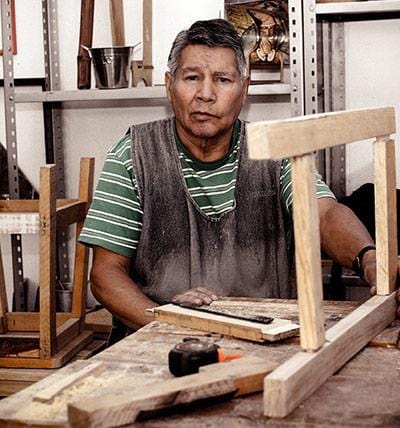Ever walk into a house and think, “This was trendy… five years ago”? Social media moves fast, and so do design trends—but your home should hold up over time. People today want more than flashy updates; they want comfort, purpose, and lasting style. As our lifestyles evolve, so should our homes—but not every trend is worth the ride.
In this blog, we will share which modern home trends are built to last, why they matter, and how to spot the difference between a fad and a future-proof feature.
Function First, Always
Here’s the truth: any design trend that ignores daily life is destined to fail. That sleek all-white kitchen? Gorgeous, but hard to keep clean when kids are throwing applesauce.
Open shelves? Great for styling. Terrible for storing mismatched mugs.
The best home trends don’t just look good—they work well. That’s why multifunctional spaces are having a moment. But it’s not just a moment. It’s a shift. Think about how many people started working from home during the pandemic. Now, they want home offices that don’t feel like repurposed closets.
Good design solves problems. It considers pets, kids, Zoom calls, and grocery deliveries. Mudrooms are back, not because they’re trendy, but because they’re useful. So are walk-in pantries, smart storage, and furniture that moves with you.
And behind many of these smart, lasting choices are design studios that know how to balance beauty with reality. Ralston Architects, for example, is known for homes that feel timeless because they’re grounded in purpose. They look at what a space needs—not just what looks good today. By focusing on flow, light, and how rooms connect, they create homes that don’t scream for attention. They simply work. Make sure to visit ralstonarchitects.com for more information.
If a design choice makes your life easier, it’s probably worth keeping. If it only made sense for a photo, maybe skip it.
Natural Materials Still Win
Let’s be honest. There was a moment when fake finishes almost fooled us. Faux wood, plastic tiles, engineered stone—all made to look like the real deal. But there’s something about natural materials that holds up over time.

Stone. Wood. Brick. They’re not just nice to look at—they tell a story. They age with the home. They change subtly over the years and somehow get better. Plus, in a world more tuned into sustainability, natural materials align with deeper values.
This trend isn’t just aesthetic. It reflects something bigger. People are tired of things that don’t last.
Planned obsolescence in tech has spilled into furniture and decor. Disposable style is out. People want pieces that feel real.
That’s why hardwood floors remain a staple. Why linen keeps coming back. Why leather, even imperfect, outshines its synthetic cousins. These choices connect us to nature, and in turn, offer comfort we don’t always find in machine-made stuff.
It’s a quiet kind of luxury. Not the shiny, gold-trimmed kind—but the grounded, honest kind.
Open But Not Empty
Remember when open floor plans were the dream? Knock down all the walls! Merge the kitchen, dining, and living into one giant rectangle! That worked... until we started spending all day at home.
Now, many families crave separation again. A little privacy. A door that closes. But the best modern homes find balance. They still feel open, but with smart zoning. Maybe the kitchen flows into the dining room, but a reading nook is tucked behind a partial wall. Or a workspace lives behind sliding panels that disappear when the workday ends.
This is the kind of evolution that sticks. It adapts. Instead of extremes—totally open or completely closed—we’re seeing layered layouts. Visual openness, yes. But functional boundaries, too.
It’s also changing how people decorate. Less about filling space with stuff, more about defining purpose. A well-placed bookshelf. A textured rug that anchors the sitting area. These are subtle, but they keep the room from feeling like a furniture warehouse.
In other words, openness is still in. Just not the kind that forgets we need walls now and then.
Warm Neutrals Over Cold Minimalism

The stark white minimalism of the 2010s is slowly fading. Not completely—but it’s evolving. Clean lines remain, but the mood has changed. People want warmth. Earth tones. Softness. Spaces that invite you in instead of making you take off your shoes and whisper.
That’s because home has taken on new meaning. After years of global chaos—from health crises to climate anxiety—people want their spaces to feel like shelter. Not in the gloomy, bunker sense. But in a nurturing, calming way.
So you’ll see more beige, tan, terracotta, and clay. More curves. Less chrome. Interiors that feel natural without being rustic. Cozy without being cluttered.
Warm neutrals also have staying power. They play well with color when you want a change. They suit every season. They age gracefully.
Built-In Character Beats Cookie-Cutter Design
Ever walk through a new development where every house looks exactly the same? It’s efficient, sure. But it’s also forgettable.
Modern homeowners are pushing back. They want character. Details that feel personal. Not necessarily old-world charm—but at least something that doesn’t look copied and pasted from a catalog.
That’s why built-in benches, custom nooks, and unique window placements are catching on. These aren’t gimmicks. They’re choices that shape how people live in the space. A bench under a window becomes a reading spot. A built-in bookshelf tells you the home is for thinkers. These are the kinds of touches that make people say, “I could see myself living here.”
And in a market where resale matters, that sense of personality helps. Buyers remember homes that feel tailored, not generic.
Outdoor Living Isn’t Just Seasonal Anymore
Backyards used to be an afterthought. Now they’re a selling point. Especially post-2020, outdoor spaces have become an extension of the home. And that’s not going away anytime soon.
Covered patios. Outdoor kitchens. Fire pits. Even small balconies are getting dressed up. Because people realized something: fresh air is good for your brain. And when the inside world feels tight, the outside can help you breathe.
The key here is making these spaces functional year-round. That means heaters for cooler months. Shade for hot ones. Durable furniture that still feels inviting.
It’s not about building a resort. It’s about giving yourself options. A place to read. To host. To unwind without a screen.
The bottom line? Modern homes are moving in a thoughtful direction. Less about looks, more about life. Less about trends, more about timeless choices that actually support how we live.
Not every design feature needs to be a bold statement. In fact, the ones that last often whisper instead of shout. They speak through quality, intention, and a quiet sense of belonging.
So if you’re planning to update your space, ask yourself this: will this still make sense five years from now? If the answer is yes, you’re probably on the right track.
Because in the end, a home isn’t just a place to show off your taste. It’s where life happens. And the best design trends are the ones that stay with you, not just for a season, but for the long haul.
ABOUT THE AUTHOR
Aleksandra Djurdjevic
Senior Content Creator
Aleksandra Djurdjevic is a senior writer and editor, covering jewelry, accessories, and trends. She’s also works with services, home décor. She has previously worked as ESL teacher for English Tochka. Aleksandra graduated from the Comparative Literature department at the Faculty of Philosophy in Serbia. Aleksandra’s love for the environment, crafts and natural products over the years helps her continue to be a top expert at Wooden Earth.






